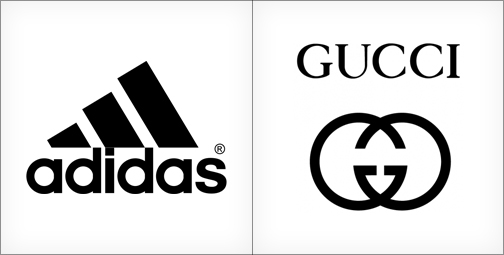Meaning and Uses of Colors in Logo Design

Featured Image Source: Pixabay/maciej326
If you don’t know about colors, you’re going to have trouble becoming a professional logo designer. It is crucial for designers to understand the essential things about color and its impact on design. Lack of an understanding can result in undeveloped and redundant color combinations which can label you as an amateur designer. As a graphic designer you must study, research and find ways to use color to bring your designs to life.
And finally, creating the perfect color palette for your brand.
Various Color Representations in Logo Design
Here’s a brief look into the emotions represented by the ten most common colors and their use in logo design for specific industries.
Black
Represents: Authority, Power, Mystery, Boldness, Elegance and Sophistication

Black is used to commonly target youth and a high-end audience. It creates a mystery while representing power, authority and elegance in the logo.
Red
Represents: Passion, Love, Anger, Hunger, Health, Excitement and Life

Red is generally an attractive, energetic and powerful color used in logos of brands belonging to the food, health, beauty and entertainment industries. Several famous brands have colored their logo red such as Coca-Cola, Kellogg’s, Red Bull, Canon and YouTube etc. These brand logos in red are no doubt memorable.
Red logos grab customer attention, and if you want to attract your target market towards your brand, use the color red. There are many amazing ways to use red in your logo to make the design unique, interesting and prominent. These red logo inspirations and tips will get you started! So make a logo design in red and boost your brand recognition.
Yellow
Represents: Happiness, Warmth, Innovation and Caution

Yellow is a warm color that invokes the feeling of happiness, warmth and relaxation. Generally it doesn’t play a central role in logos and is sparingly used to highlight important features of a logo. Used alone in bright shades, the color can be overpowering which is why it is a difficult color to use. Yellow is most commonly used by the automotive and food industries.
Blue
Represents: Professionalism, Trust, Authority, Power and Loyalty

Blue is used in corporate logos as it creates a sense of security while showing loyalty and professionalism. This color is used by various businesses related to software, finance, pharmaceutical industry, government and banks. While you can create a logo with just the color blue, you can also accompany two colors in a design such as a red and blue logo.
Green
Represents: Harmony, Natural, Healthy, Renewal and Plentiful

Green is mainly used to represent eco-friendly companies or businesses revolving around agriculture, recycling, landscaping, gardening and solar power. It is the color of nature and gives a calming effect while representing growth. Naturally one would believe the choice of green is restricted to a few industries. In reality, various top brands have used shades of green in their logos.
Orange
Represents: Vibrant, Playful, Happy, Artistic and Energetic

Orange is another beloved color of the food, art and the sports industries. While in one sector it evokes an appetite, in others it suggests playfulness, creativity and energy. Being bright makes orange the favorite color for industries dealing with kids’ products and foods. Some creative industries use orange in logos to stand out.
Purple
Represents: Royalty, Luxury, Celebration, Education and Elegance

Being a color of royalty, purple is mostly used to represent religious institutes and educational organizations. It is seldom used for commercial services, unless it can clearly represent the main essence of the company it stands for. Chocolate is one food which is often represented by purple logos. There’s no need to shy away from purple and limit it to represent feminism, luxury and beauty only. You can pair it with other colors and create a palette. For example, purple and yellow logo designs are popular and exude different meanings.
White
Represents: Pure, Peaceful, Spiritual, Clean and Goodwill

White is a neutral color that implies purity. It is also the essential color in negative spacing logos. The FedEx and the Adobe logo make the best use of white. FedEx has a white arrow while the ‘A’ in Adobe is designed in white over a red background.
Pink
Represents: Feminism, Innocence, Youth and Beauty

Pink is often taken to be a feminine color, which is why it is popularly used in logos related to beauty, fashion and others. It is also used for companies dealing with children’s clothes and accessories. Because it is playful and innocent, it is not suitable for the corporate or industrial unit.
Brown
Represents: Reliable, Solid, Masculine and Earthly Aura

Brown is a neutral color that is reliable, solid and dependable. This color is most commonly used for agriculture, construction and legal industries. Some food related products like coffee and chocolate are also best represented by brown.
Colors play an important role in giving your logo life. If you want to create a winning logo design, play with colors, experiment with various shades and see which of them best represent the essence of your client’s company. Be sure not to forget the target audience and how they will relate to the colors in the logo design.
Logo Images Source: Google Images
Conceptualizing the Impact of Intelligent Logo Design:
Blog Update: 4 April 2015
*This post was originally written by Alexis Stone.


